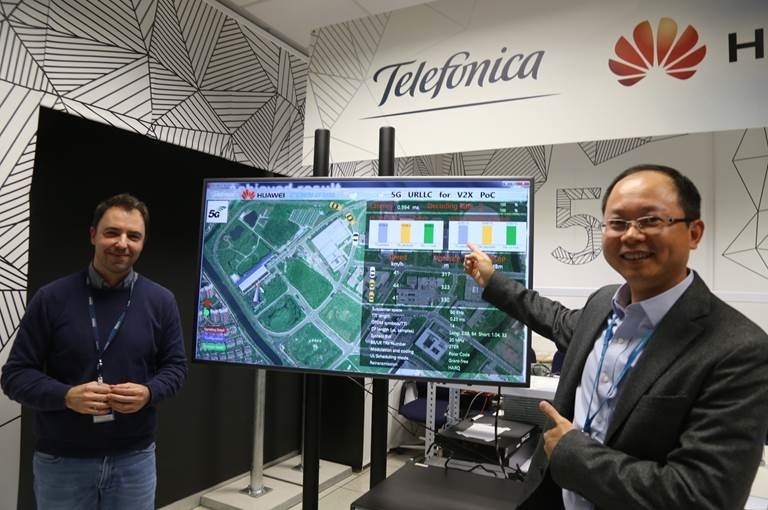Telefonica and Huawei have completed a PoC for vehicle-to-everything (V2X) technology at their 5G Joint Innovation Lab in Madrid, built on 3GPP 5G NR specifications.
February 6, 2018

Telefonica and Huawei have completed a PoC for vehicle-to-everything (V2X) technology at their 5G Joint Innovation Lab in Madrid, built on 3GPP 5G NR specifications.
As part of the announcement, the pair stated the Ultra-Reliable and Low-Latency Communication (URLLC) mode for 5G NR can support V2X communications with higher system capacity and better coverage. During the exercise, the pair demonstrated 99.999% reliability, along with the low latency of 1ms required for autonomous driving in a typical every day environment.
This test does not necessarily show self-driving cars are closer than we thought, but it is a pat on the back for anyone who was involved with the 3GPP 5G NR Specifications. This in itself is a very positive step forward. It might not be the all singing, all dancing end-product, but the foundations for a much hyped area of the industry are seemingly solid.
“This PoC between Telefónica and Huawei is another step towards 5G commercialization and a fully connected society,” said Enrique Blanco, Telefónica Global CTIO. “We will strengthen our collaboration by verifying 5G key technologies. Multiple novel use cases will be developed and provided to our customers.”
“We are pleased with our further collaboration with Telefónica in 5G technologies,” said Wen Tong, Huawei Wireless CTO. “The 5G-V2X PoC is another joint effort to pave the way for commercialization of 5G and lay a solid foundation to realize the 5G vision of enabling cooperative autonomous driving.”
Looking at the nitty gritty side of the PoC, the pair used a novel self-contained frame structure for radio transmission. This frame structure was used for both the base station to the vehicle transmission and between vehicles. To improve performance, the test also included SCMA-based (Sparse Coded Multiple Access) Grant Free Access. This technology is designed to simplify uplink access procedures to reduce transmission latency.
As with other conferences earlier in the year, such as CES, this year’s MWC is likely to feature a number of demonstrations of this nature. Autonomous cars are the ‘wow’ factor which could grab the attention of passing engineers, though it should be worth noting this PoC is more of a thumbs up to the NR Specifications rather than an acceleration towards autonomous vehicles. While the technology might be closer the rest of the world isn’t anywhere near ready for autonomous vehicles.
About the Author(s)
You May Also Like








.png?width=300&auto=webp&quality=80&disable=upscale)


_1.jpg?width=300&auto=webp&quality=80&disable=upscale)


.png?width=800&auto=webp&quality=80&disable=upscale)